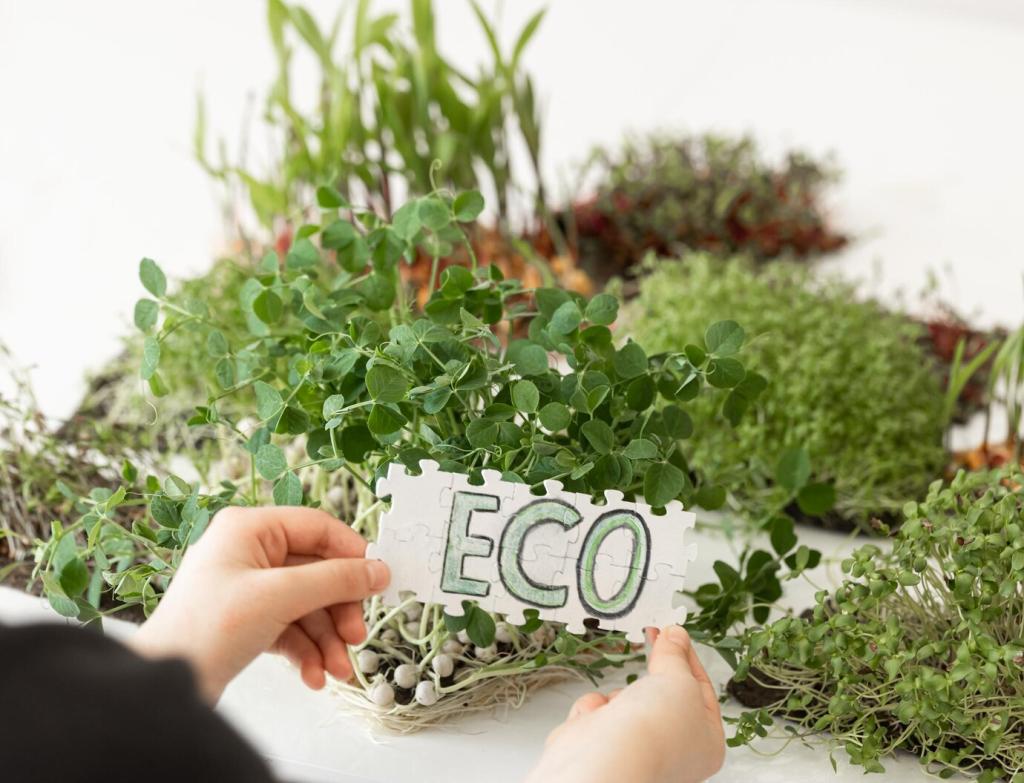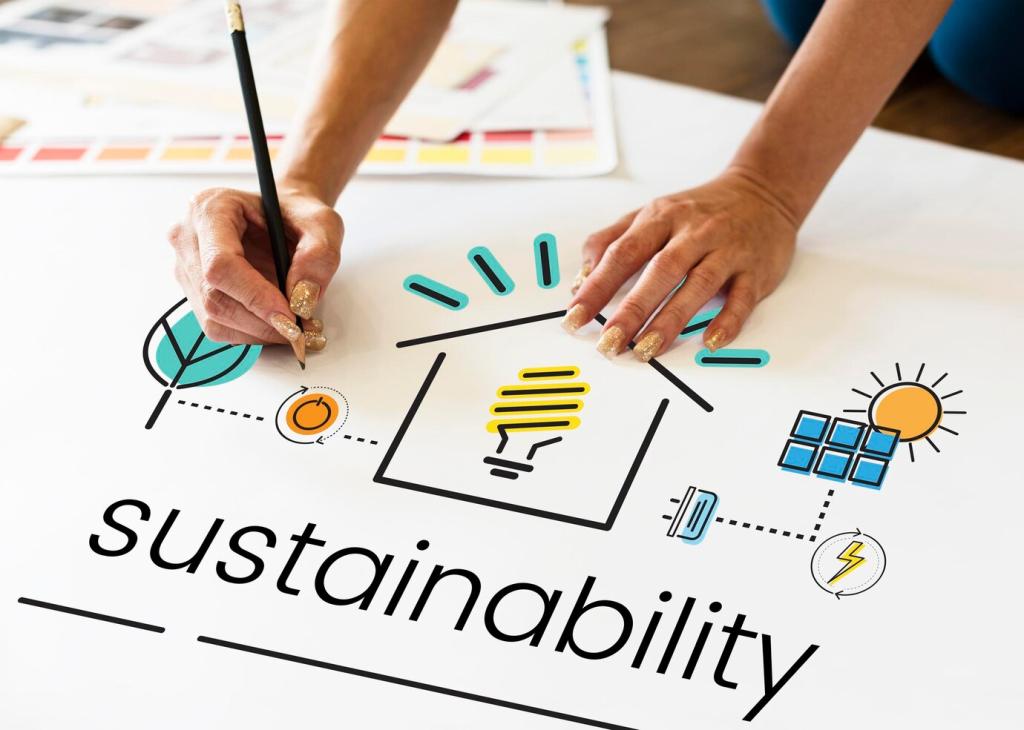Eco-Friendly Remodeling Techniques
Sustainable Material Selection
Recycled and Upcycled Materials
Incorporating recycled and upcycled materials into your renovation project significantly reduces resource consumption and landfill waste. These materials can range from reclaimed wood flooring to cabinetry fashioned from reused materials, or countertops made from recycled glass. The use of such resources not only preserves natural habitats otherwise affected by extraction, but also brings unique character and history into your space. Upcycling, where materials are repurposed for new functions, is particularly notable for reducing the carbon footprint associated with manufacturing new products. When sourcing these materials, look for reputable suppliers who transparently cite where and how they collect and process used components.


Locally-Sourced Options
By selecting materials produced close to your home, you limit the emissions associated with transportation and support the local economy. Locally-sourced woods, stones, and fixtures are often better suited to withstand your region’s climate, ensuring greater durability and less frequent need for replacements. Sourcing locally can also give you greater insight into the manufacturing practices used, allowing for more direct verification of sustainable harvesting and fair labor standards. Local suppliers may also offer customization options, tailoring products to your specific design and energy efficiency needs.

Passive Solar Planning
Passive solar design harnesses the sun’s energy to maintain comfortable indoor temperatures. By strategically placing windows, choosing appropriate shading, and using thermal mass materials, you can reduce reliance on artificial heating and cooling. South-facing windows let in warmth during winter months, while roof overhangs and shading devices block excess heat in summer. Good passive solar planning requires an understanding of local climate patterns and can drastically reduce energy spending while boosting the overall comfort of your home year-round.
High-Performance Insulation
Investing in high-quality insulation is one of the most effective ways to improve your home’s energy efficiency. Proper insulation keeps heated or cooled air inside, helping you achieve optimal temperatures with less mechanical intervention. Eco-friendly insulation options, such as cellulose made from recycled paper, sheep’s wool, or rigid foam boards with low environmental impact, outperform traditional fiberglass in thermal retention and are often less harmful during installation. Enhanced insulation contributes to quieter interiors and lower energy bills for decades to come.
Efficient Lighting Solutions
Switching to energy-efficient lighting is a small update with major impact. LED bulbs, smart lighting controls, and thoughtfully designed fixtures use a fraction of the energy required by traditional incandescent lights. Natural daylighting strategies, such as skylights or light tubes, can supplement artificial lighting and further reduce electricity demand. Efficient lighting not only cuts costs but also reduces the load on power grids, minimizing the overall environmental impact associated with electricity generation.
Water Conservation Strategies
Low-Flow Fixtures
Modern low-flow fixtures for showers, toilets, and faucets provide the same level of functionality while using significantly less water. Technological advances have made it possible to maintain water pressure and comfort alongside substantial water savings. Installing these fixtures during a remodel is straightforward and delivers immediate reductions in water use, which reflects positively on utility bills while conserving a vital natural resource.
Rainwater Harvesting Systems
Incorporating rainwater harvesting into your home remodeling can provide a renewable source of water for landscape irrigation, toilet flushing, or even, with advanced filtration, household uses. Collection systems are typically installed on rooftops with gutters that channel rainwater into storage tanks. This approach not only reduces demand on municipal systems, especially during droughts, but also indirectly lowers the energy required for water treatment and transport.
Xeriscaping and Native Landscaping
Outdoor remodeling offers an opportunity to rethink your landscaping for water efficiency. Xeriscaping relies on drought-tolerant and native plant varieties that require minimal supplemental irrigation. Such choices reduce overall water use, decrease the need for fertilizers and pesticides, and support local ecosystems. By designing a garden attuned to your regional conditions, you effectively reduce maintenance hours and build resilient green spaces that thrive with less.
Indoor Air Quality Enhancement
Advanced Ventilation Solutions
Proper ventilation is crucial in expelling indoor pollutants and maintaining air freshness. High-efficiency heat recovery ventilators (HRVs) or energy recovery ventilators (ERVs) replace stale indoor air with clean outdoor air while retaining heat or coolness, thus minimizing energy loss. These systems can be integrated during remodeling to provide a continuous flow of filtered air, effectively removing moisture, allergens, and airborne contaminants that contribute to poor air quality.
Non-Toxic Finishes and Furnishings
Traditional paints, stains, and finishes often contain chemicals that release pollutants over time. Choosing non-toxic, low- or zero-VOC alternatives drastically diminishes harmful off-gassing. In addition, opt for furniture and cabinetry made from sustainably harvested woods and finished with natural oils or water-based products. Prioritizing these items helps create a safer, healthier indoor environment, especially important for homes with children, the elderly, or anyone sensitive to chemical exposure.
Mold and Moisture Control
Remodeling provides a prime opportunity to address underlying moisture issues that can lead to mold growth. Proper sealing, improved drainage systems, and the use of mold-resistant materials in wet areas protect both the structure and the health of occupants. Ensuring good air circulation, sealing leaks, and installing effective vapor barriers are all essential steps to maintain a dry, mold-free interior, thereby reducing respiratory risks and improving overall indoor air quality.
Waste Reduction and Recycling Practices
Instead of traditional demolition, consider deconstruction, which involves carefully dismantling existing structures to salvage materials for reuse. Deconstruction allows fixtures, doors, windows, and even large lumber to be recycled or repurposed in the renovation, substantially decreasing waste. By salvaging and repurposing, you also retain the character and history of the home, and reduce the environmental impact associated with new material production.
Previous
Next
Solar Panel Installation
The addition of photovoltaic solar panels to your home is a game-changer for reducing dependence on fossil fuels. Modern solar systems can be integrated seamlessly into your roof structure during remodeling, optimizing exposure and aesthetic appeal. As solar technology steadily improves and costs decline, homeowners benefit from reliable, low-maintenance energy production, and in many regions, government rebates and incentives help offset installation costs.
Solar Water Heating
Solar water heating systems use energy from the sun to provide hot water for your household, significantly cutting down on conventional energy use. These systems are particularly well-suited to sunny climates and can be installed in both new builds and retrofits. By leveraging solar energy, you reduce the need for electric or gas-powered water heaters, resulting in immediate energy and cost savings while also reducing greenhouse gas emissions.
Geothermal Heating and Cooling
Geothermal systems harness the consistent temperature of the earth beneath your home to provide heating in winter and cooling in summer. These ultra-efficient systems circulate a water-based solution through underground pipes, exchanging heat with the stable earth temperature. While initial installation requires a significant investment, operational costs are minimal, and the environmental benefits are long-lasting. Geothermal energy is both renewable and highly reliable, making it an attractive option for eco-conscious remodelers.
Smart Home Automation for Sustainability
Smart energy management systems monitor and optimize electricity use based on real-time data. By automating HVAC, lighting, and appliance schedules, these systems ensure energy is used only when needed. Comprehensive dashboards allow homeowners to track patterns, set preferences, and identify opportunities for further efficiency. Intelligent energy controls can adjust to changes in occupancy or habits, minimizing waste and ensuring a consistent reduction in utility costs.

Green Certifications and Professional Guidance
01
Recognized Certification Programs
Pursuing green certifications such as LEED (Leadership in Energy and Environmental Design), ENERGY STAR, or Green Globes signifies a commitment to sustainable building standards. These programs evaluate various aspects of remodeling, from material use and energy performance to indoor air quality and water management. Achieving certification provides assurance that your project aligns with best practices in environmental responsibility, potentially increasing property value and future-proofing your investment.
02
Consulting Sustainable Building Experts
Enlisting the expertise of architects, designers, and contractors specializing in green remodeling can streamline the process and maximize results. These professionals are versed in the latest technologies, regulations, and products, ensuring that your remodel not only meets but exceeds sustainability goals. Their experience helps anticipate potential challenges, find innovative solutions, and ensure building codes and guidelines are thoroughly adhered to, resulting in a more successful and eco-friendly transformation.
03
Local Government Incentives and Resources
Many municipalities offer incentives—such as rebates, grants, or tax credits—for homeowners undertaking sustainable renovations. Government agencies may also provide resources, such as directories of qualified green professionals or guidelines for eco-friendly practices. Investigating and leveraging these opportunities simplifies your remodeling journey, lowers costs, and amplifies the positive impact of your environmentally-responsible decisions.
